Lesson Plan: My Family
This engaging lesson plan explores family diversity, helping young learners identify and discuss family members. Activities include creating family trees, finger puppet conversations, and singing The Family Song. It emphasizes respecting all family types and traditions, fostering inclusivity and understanding in a fun, interactive way.
Title Page
Lesson Plan: My Family
Grade Level: Grade 1
Subject: English Language Arts
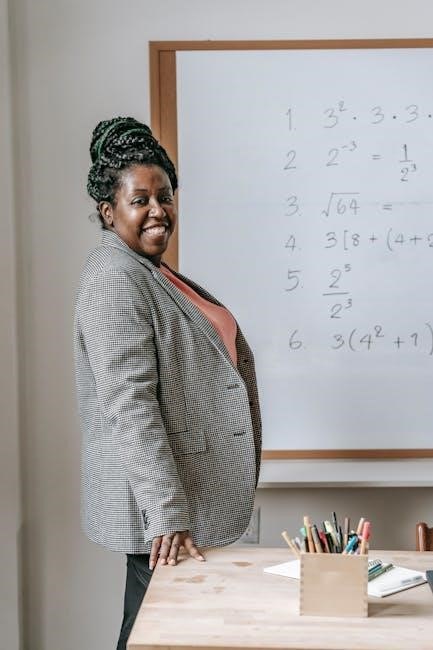
Tagline: Exploring Family Diversity and Building Connections
This lesson plan is designed to engage young learners in understanding and appreciating the concept of family. It incorporates interactive activities, storytelling, and creative exercises to help students identify and discuss their family members. The plan emphasizes respect for different family structures and traditions, fostering inclusivity and cultural awareness.
Sections Included:
- Lesson Objectives
- Materials Needed
- Warm-Up Activity
- Story Time
- Worksheet Activity
- Craft Activity
- Song or Rhyme
- Review and Closing
- Assessment
- Extensions
- Teacher’s Notes
This comprehensive plan ensures a structured and engaging learning experience for students, focusing on family-related vocabulary, cultural sensitivity, and creative expression.
Lesson Objectives
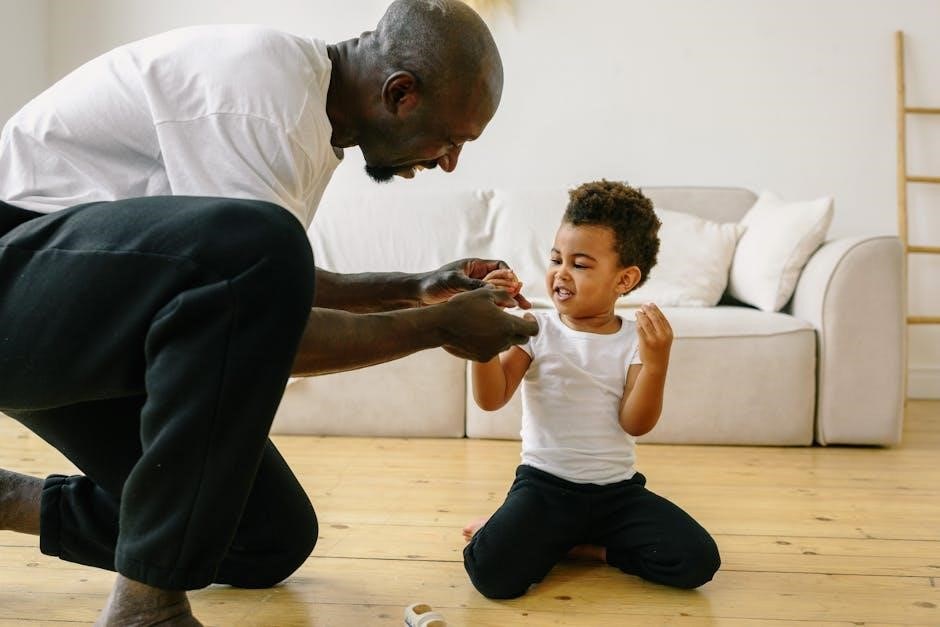
By the end of this lesson, students will be able to:
- Identify and name basic family members using target vocabulary (e.g., mom, dad, brother, sister, grandpa, grandma).
- Understand and describe different family structures, including nuclear, extended, single-parent, and blended families.
- Recognize and respect the diversity of family traditions, cultures, and values.
- Engage in simple conversations about their family using newly learned vocabulary and phrases.
- Develop listening and speaking skills through interactive activities, stories, and discussions.
- Begin to understand the importance of family relationships and cultural heritage.
- Create a visual representation of their family tree, incorporating vocabulary and creativity.
- Demonstrate an appreciation for the uniqueness of each student’s family background.
These objectives are designed to promote a deeper understanding of family dynamics while fostering inclusivity and cultural sensitivity. The activities will encourage students to share their experiences, building confidence and fostering a sense of belonging in the classroom.
Materials Needed
To effectively implement this lesson, the following materials are required:
- Printed vocabulary cards of family members (e.g., mom, dad, brother, sister, grandpa, grandma).
- Family tree templates for students to create their own family diagrams.
- Construction paper (various colors) for poster-making and craft activities.
- Glue, scissors, and markers for arts and crafts.
- Finger puppets representing different family roles for role-playing conversations.
- Storybooks about families to read during story time.
- Worksheets with matching exercises for vocabulary practice.
- A whiteboard and markers for introducing new words and concepts.
- Flashcards with family-related phrases for vocabulary building.
- A music player or digital access for playing The Family Song.
- Family photos (optional) for students to share.
- A Venn diagram handout for comparing family similarities and differences.
- Question cards to prompt class discussions.
- A poster titled “My Family Tree” for display.
- A lesson plan PDF for the teacher’s reference.
These materials ensure that students engage actively with the lesson, fostering both creativity and understanding of family structures and traditions.

Warm-Up Activity
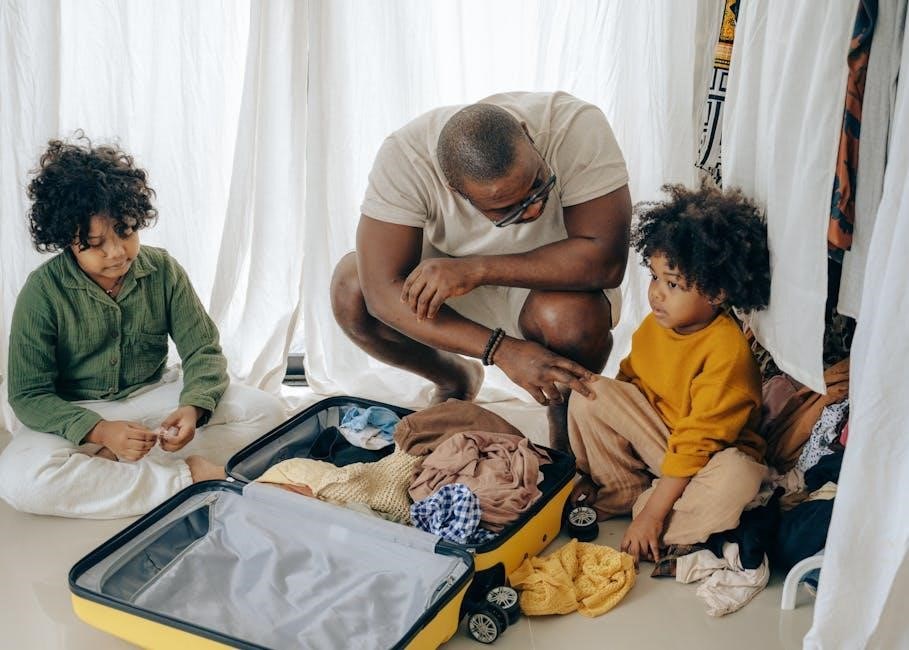
To begin the lesson, the teacher will initiate a class discussion to introduce the topic of family. Students will be asked to share the names of their family members and describe their roles. For example, questions like, “Who is in your family?” or “What do you like to do with your family?” will encourage participation. To make it more engaging, the teacher will display a large, blank family tree on the board and invite students to suggest titles for each family member (e.g., mom, dad, brother, sister). This activity will help students connect their personal experiences with the lesson’s content. Additionally, a quick game will be played where students match vocabulary cards with corresponding family member names. This warm-up aims to create a relaxed atmosphere, activate prior knowledge, and introduce key vocabulary related to family structures. By involving students in these interactive tasks, the teacher ensures that everyone feels comfortable and ready to engage with the lesson.
The teacher will introduce key vocabulary related to family members, such as mom, dad, brother, sister, grandpa, grandma, aunt, uncle, cousin, and pet. These words will be displayed on flashcards with corresponding images to help students visualize and remember them. The lesson will also include phrasal verbs related to family, such as take care of, look after, live with, and visit. To engage students, the teacher will use a matching game where students pair vocabulary cards with their meanings. Additionally, a word bank will be provided for students to reference throughout the lesson. This activity aims to build foundational vocabulary and ensure students can identify and describe their family members confidently. The introduction will also touch on simple questions like Who is your favorite family member? or What does your mom do? to encourage students to use the new words in context. By focusing on both basic and extended family terms, the lesson ensures a comprehensive understanding of family vocabulary.
Story Time
During Story Time, the teacher will read a selected story that highlights different family members and their roles. The story will feature a diverse family, showcasing various traditions and relationships to promote inclusivity. Students will be encouraged to listen attentively and identify family members mentioned in the story. After reading, the teacher will lead a class discussion, asking questions like, “Who is your favorite character in the story?” or “What did the family do together?” This activity aims to reinforce vocabulary learned earlier and encourage students to connect the story to their own family experiences. The story will also introduce simple sentences and questions, such as “Where is your brother?” or “What does your mom like to do?” to model conversational English. To make it interactive, students will be invited to predict what might happen next in the story or share one thing they have in common with the characters. This engaging approach will help students develop listening skills, build confidence in using new vocabulary, and foster a deeper understanding of family dynamics. The story will be read aloud twice, with the second reading allowing students to join in on familiar phrases or repetitive lines.
Worksheet Activity
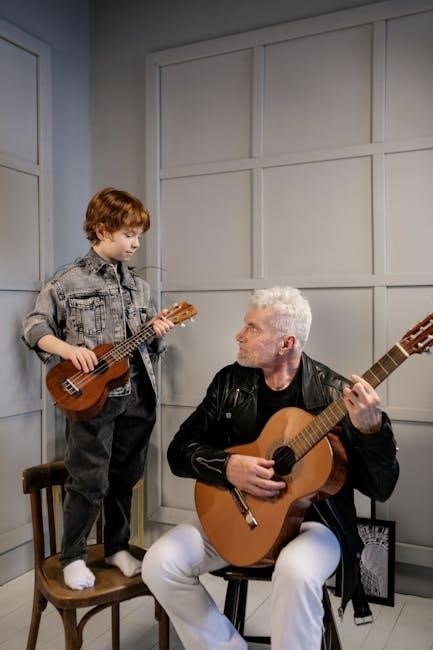
The Worksheet Activity is designed to reinforce the vocabulary and concepts introduced during the lesson; Students will complete a variety of exercises tailored to their learning level. Key activities include matching family member names to their corresponding pictures, filling in the blanks with correct vocabulary, and drawing their own family members. A Venn diagram activity will also be included, where students compare their family with a friend’s or a character from the story. This helps students identify similarities and differences while practicing descriptive language.
The worksheet will feature simple sentences for students to complete, such as “My mom’s name is ______” or “I have ______ brothers.” Older students will also practice writing short sentences about their family traditions or hobbies. The teacher will circulate the room to assist students, provide feedback, and encourage creative thinking. To make it engaging, the worksheet will include fun visuals and colorful illustrations to keep students focused. Upon completion, students will share one thing they wrote or drew with a partner or the class, fostering confidence in using English.
This activity aligns with the lesson’s objectives by reinforcing vocabulary, improving writing skills, and encouraging self-expression. It also serves as a formative assessment to gauge students’ understanding of family-related terms and concepts. The worksheet will be collected to track progress and provide individualized feedback.
Craft Activity
The Craft Activity provides students with the opportunity to creatively express their understanding of family through hands-on projects. One of the primary activities is the creation of a family tree poster. Students will be given large sheets of paper, colored markers, glue, and scissors to design their family tree. They will draw themselves at the center and branch out to include parents, siblings, grandparents, and other relatives. This visual representation helps students visualize their family structure and roles.
Another engaging craft is the “Family Member Finger Puppets” activity. Students will craft finger puppets representing different family members using felt, buttons, and string. Once completed, they will use these puppets to act out simple conversations or scenarios related to family interactions. This not only enhances their creativity but also reinforces their vocabulary and communication skills.
The craft activity is designed to be both fun and educational, allowing students to explore their family dynamics while practicing fine motor skills and collaboration. The teacher will circulate to assist and encourage students to share their creations with the class. This activity also serves as a meaningful way to celebrate family diversity and individuality.
Song or Rhyme
The Song or Rhyme activity is a lively and engaging way to reinforce family-related vocabulary and promote language development. Students will participate in singing The Family Song, a simple and catchy tune that introduces key family members such as mom, dad, brother, sister, and grandpa. The song is accompanied by hand gestures, making it easier for young learners to remember the words and their meanings.

In addition to The Family Song, the lesson includes a rhyming poem titled My Family and Me. This poem focuses on the diversity of families, emphasizing that all families are unique and special. Students will recite the poem in groups, encouraging teamwork and confidence in speaking aloud. The rhyme also includes questions about their own families, prompting students to share personal connections.
The song and rhyme are designed to be repetitive, allowing students to practice pronunciation and intonation. Teachers will guide the class through multiple renditions, gradually increasing student participation. By the end of the activity, students will be able to identify and sing about their family members confidently, creating a fun and memorable learning experience. This activity also fosters a sense of community and shared joy in learning.
Review and Closing
The review and closing section of the lesson plan is designed to reinforce the key concepts and vocabulary introduced throughout the class. The teacher will begin by summarizing the main points, such as the names of family members, their roles, and the importance of family diversity. Students will participate in a quick Q&A session, answering questions like, “Who is in your family?” and “What makes your family special?”
A fun closing activity involves students sharing one thing they learned about families during the lesson. This encourages reflection and reinforces new vocabulary. To end on a positive note, the class will sing a short, upbeat Family Closing Song or recite a simple rhyme together, such as My Family and Me, which reinforces the lesson’s themes of love, unity, and diversity.
Before dismissal, the teacher will distribute a small homework assignment, such as drawing a picture of their family or writing a short sentence about their favorite family tradition. This activity ensures continued engagement with the topic outside the classroom. The lesson concludes with a reminder that every family is unique and valuable, fostering a sense of respect and appreciation for diversity.
Assessment
The assessment section of the lesson plan evaluates students’ understanding of family-related vocabulary, concepts, and skills. The teacher will use a combination of formative and summative assessments to track progress throughout the lesson.
Formative assessments include observing students during the warm-up activity, vocabulary introduction, and craft project. The teacher will note participation levels and ability to identify family members using the target vocabulary. For example, during the family tree craft, the teacher will circulate to ask students questions like, “Who is this person in your family?” to gauge comprehension.
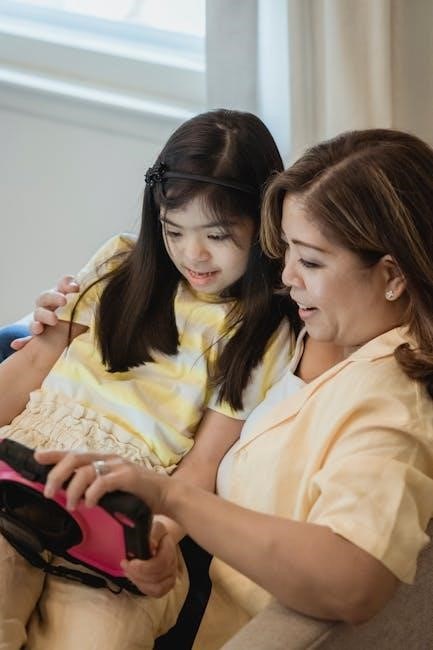
Summative assessments focus on the worksheet activity and the completed family tree project. Students will be evaluated on their ability to match vocabulary words to pictures, complete sentences about their family, and accurately label their family tree. Additionally, participation in the class discussion and song activity will be considered in the final assessment.
The homework assignment, such as drawing a family picture or writing a short sentence about a family tradition, will also be reviewed to assess retention of the lesson’s content. This holistic approach ensures the teacher gains a comprehensive understanding of each student’s learning outcomes.
Extensions
Extensions provide opportunities to deepen students’ understanding of family concepts and apply their learning in creative ways. One idea is to create a Class Family Book, where each student contributes a page about their own family, including photos, drawings, and short descriptions. This collaborative project fosters a sense of community and allows students to share their unique family stories.
Another extension is a Family Traditions Showcase. Students can bring in an object or food that represents a special family tradition, such as a holiday dish or a cultural artifact. They will present their item to the class, explaining its significance, which encourages cross-cultural sharing and appreciation.
For younger learners, a Family Interview Project can be assigned as homework. Students interview a family member and write or draw about what they learned. This activity reinforces vocabulary and connects classroom learning to real-life experiences. Teachers can then compile the interviews into a class anthology.
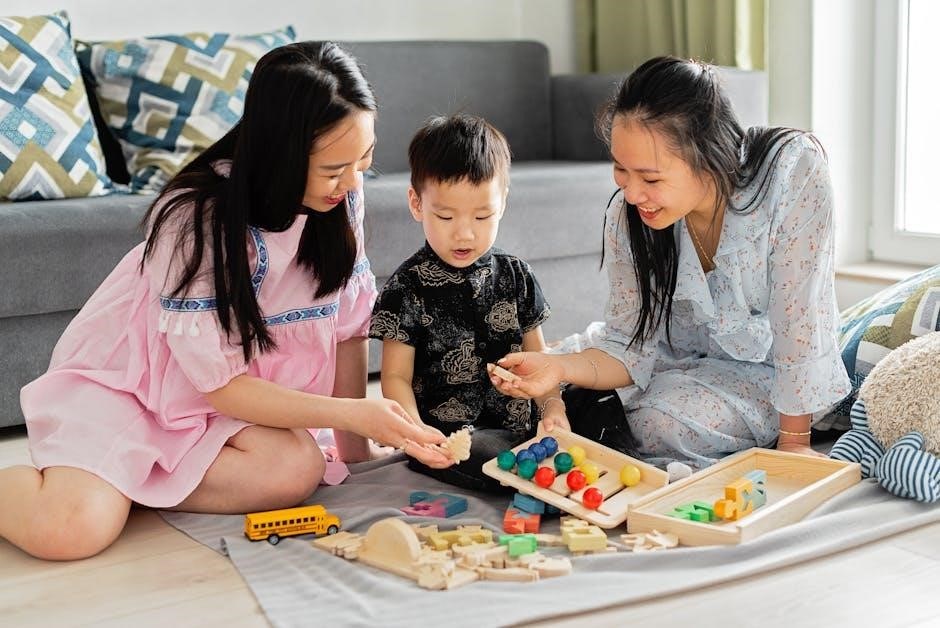
Older students can participate in a Family Timeline Activity, where they map out important family events, such as births, moves, or cultural celebrations. This helps students visualize their family history and practice sequencing skills.
These extensions allow students to explore family themes in meaningful and engaging ways, while reinforcing the lesson’s objectives and fostering a deeper connection to the material.
Teacher’s Notes
Teachers should ensure a welcoming and inclusive environment when discussing family topics, as students may have diverse family structures. Encourage respect for all family types, including single-parent, same-sex, and extended families. Before the lesson, prepare materials like family photos, art supplies, and worksheets to facilitate smooth activity transitions.
Consider students’ cultural backgrounds and sensitivities when introducing family-related topics. Provide opportunities for students to share their experiences voluntarily, ensuring no one feels pressured. For younger learners, pair visual aids with simple language to reinforce vocabulary and concepts.
Be flexible with timing, as some activities may require more time depending on class engagement. For students with special needs, offer differentiated activities, such as pre-made templates for family trees or one-on-one assistance during crafts.
Encourage students to ask questions and explore their curiosity about families. After the lesson, consider sending a note to parents inviting them to discuss family traditions or share photos, reinforcing the learning at home.
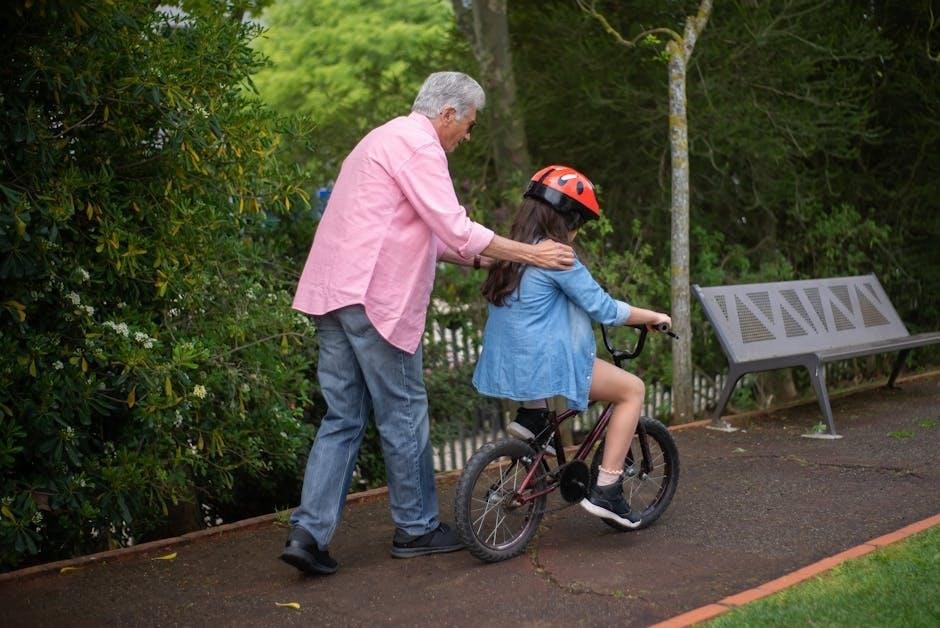
Reflect on the lesson’s effectiveness and adjust future plans based on student feedback and participation. This ensures the lesson remains engaging and meets the diverse needs of all learners.